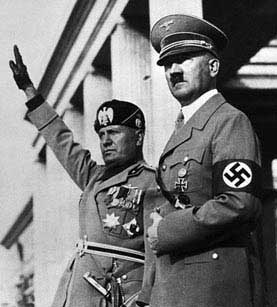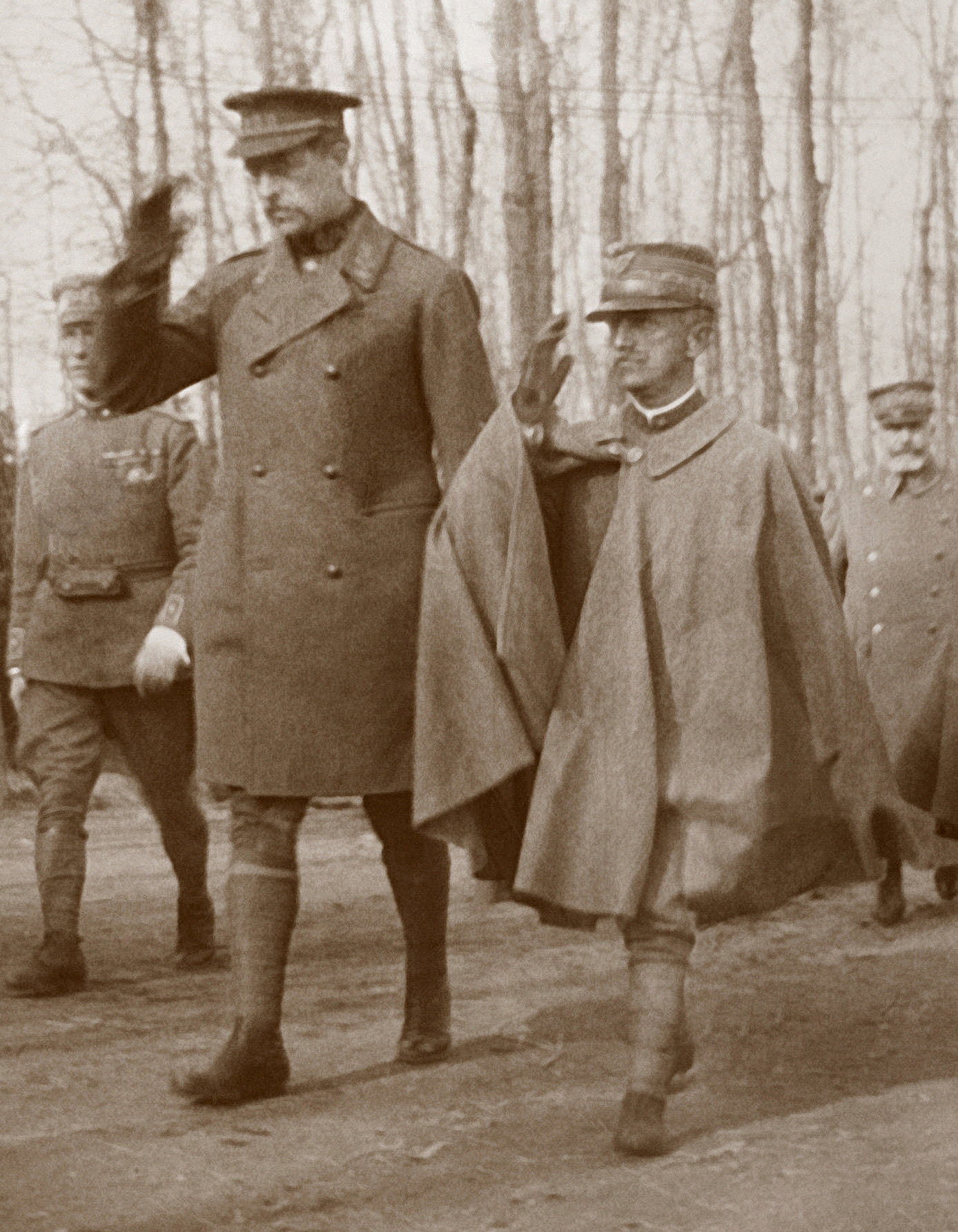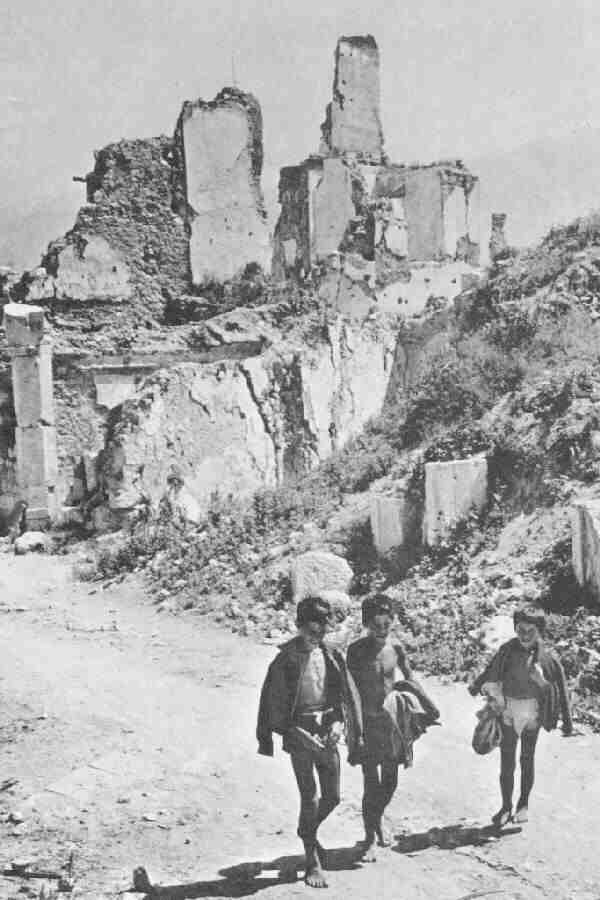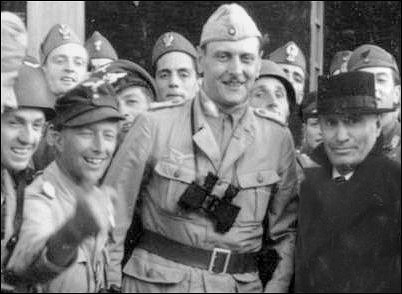By the standards of his twenty-one years of rule, Benito Mussolini’s meeting at the Italian Royal Palace of Caserta was an unusual one. The head of the Italian government and self-styled Il Duce (The Leader) of Fascism, Mussolini was unaccustomed to being given orders. But in addition to his other titles, Mussolini was also the Prime Minister and, in theory, although not in practice, subservient to the Italian Monarch Victor Emmanuel III.
With Sicily invaded on July 10th and Rome bombed for the first time on the 19th, Mussolini believed he was to modestly report to the diminutive (both in size and stature) Monarch. Barely a few sentences into their meeting, Emmanuel III shocked his guest by declaring he was enacting his right to remove Il Duce from power. A stunned Mussolini emerged from Caserta only to be arrested by the Carabinieri or military police. The father of Fascism, the man whose ideology inspired countless imitators around the world and indirectly launched the most destructive war in human history was deposed.

The narrative of the rise and fall of Benito Mussolini has only recently begun to emerge from under the shadow of Adolf Hitler and the Third Reich in more mainstream historical literature. Despite ruling Italy for over 20 years, and being regarded as one of the continents foremost political leaders before World War II, Mussolini’s brutal, confusing reign has resided in caricature. The image of Mussolini – shaved head, military uniform, jutting out his chin and jowls in pompous performance while giving a speech – reflects a persona not-so-carefully crafted in Il Duce’s second decade of power. The impression then, as now, trivializes Mussolini as a dunce and buffoon; a comically dangerous echo reflected in countless tin-pot dictators around the world.
Such a view obscures Mussolini’s first decade in power – one in which the would-be dictator was lauded as bringing stability to the chronically unstable Italy. TIME gave him “Man of the Year” honors. Cole Porter declared “You’re the top!/You are Mussolini!” as late as 1934. “If I had been an Italian I am sure that I should have been whole-heartedly with you from the start to finish in your triumphant struggle against the bestial appetites and passions of Leninism,” said Winston Churchill about Mussolini’s rise to power. H.G. Wells’ coined term “liberal fascism” (which Jonah Goldberg has ridden to great success), highlighted the view of Il Duce and his movement in its heyday as a positive, progressive force that would synthesize democracy, socialism, and capitalism, removing their individual excesses.

Instead, the narrative of Benito Mussolini and Fascism begins with his 1935 decision to invade Abyssinia (the end product of which we’ve covered before), a move now seen as a fait accompli despite being viewed as a betrayal at the time. But as late as the German invasion of France, there were still those who held out hope that Fascism could be turned against Nazism. Not without reason – Mussolini had nearly gone to war with Germany over the assassination of Austrian dictator Englebert Dollfuss in an attempt for Germany to annex Austria. But by 1940, Mussolini was firmly in Hitler’s pocket and Italy declared war on Britain and France. As FDR remarked: “the hand that held the dagger has struck it into the back of its neighbor.”
—-
When he signed the “Pact of Steel,” binding Italy to Germany in the late 1930s, Mussolini proclaimed that “the olive branch of peace springs from a forest of 8 million bayonets”; a reference to Italy’s claimed military manpower.
By late July of 1943, what little remained of Italy’s military might, bayonets or otherwise, was collapsing. The home front was doing little better. Major strikes in the industrial north of the country occurred for the first time since the mid 20s. Factories in Milan and Turin followed, bringing arms production to a crawl. Fascism was now seen by the populace as little more than an Italian glove covering the German fist of increasing occupation. When Allied troops took Sicilian towns, the locals welcomed them as liberators.

Mussolini saw the writing on the wall. As early as April of 1943, Il Duce tried to convince Hitler to negotiate an end to the war with the Soviets and turn the sizable forces committed on that front against the Western Allies. The suggestion went no further – Mussolini was mostly assuredly Hitler’s junior partner, a fact demonstrated on July 19th when Hitler summoned Mussolini to berate the crumbling performance of the Italian army. In turn, Hitler’s suggestion of withdrawing from all of southern Italy was in reality more of an order.
German dominance over the defense of the Italian homeland didn’t go unnoticed by Mussolini’s fellow fascists. Unlike Adolf Hitler’s consolidated hold on power in Germany, Mussolini at least nominally reported to the Fascist Grand Counsel, a group of 26 members of the highest ranking Fascist officeholders. Most were Mussolini’s allies, including his son-in-law Count Galeazzo Ciano. At a meeting on July 24th, the first time the Counsel had met since war was declared, the long knives had been drawn and were out to carve Mussolini to pieces.
The long train of failures that Mussolini had presided over were thrown back at the dictator who hadn’t seen legitimate political opposition in 15 years. In a 19-7 vote, the Counsel declared that King Victor Emmanuel III would resume his constitutional duties as the political and military leader of the country. Mussolini had, in effect, been voted out of office.

The Counsel’s decision had no impact on Mussolini, who regarded it as a merely advisory body with no political power. And in essence, Mussolini was correct. In 1925, Mussolini had changed the his title from “president of the Council of Ministers” to “head of the government.” The move sounded unnecessarily grandiose (in keeping with Mussolini’s style), but had the practical impact that Mussolini was no longer accountable to any legislative or judicial oversight. Only the King could now remove Mussolini without it being viewed as a coup.
—-
Victor Emmanuel III would make for a terrible hero character in any fictional work. Short (generously listed as 5-feet tall), disinterested in political affairs and capricious when it came to war and peace, Emmanuel III had already lead his country into World War I against the wishes of many. Emmanuel III had stayed silent during most of Mussolini’s reign, willingly accepting the new titles of Emperor of Ethiopia and King of the Albanians despite concern among the dwindling Italian royalty at being seen as endorsing Mussolini’s imperial escapades. Nevertheless, Emmanuel III remained reasonably popular and was assumed as distant from the Fascist regime.
If inaction had caused Italy to fall into the position of being torn apart by war, action saw no respite to the poor leadership and decision-making that had haunted Italy for decades. Despite his willingness to depose the man he had invited into power in 1922, Emmanuel III had no intention of directly running the government. After arresting Mussolini at Caserta, Emmanuel III appointed Gen. Pietro Badoglio as the new Prime Minister. A general with better political skills than military ones, Badoglio was equally ill-suited for the task of saving Italy.

Badoglio’s best decisions were his first. Knowing the Italian government was now more a hostage to Nazi Germany than an ally, Badoglio immediately announced that Italy would stay in the war on the Axis side. But Badoglio was quickly taking steps to ensure neither Mussolini or his allies could seize power, at least without German help. The Fascist Party was dissolved without fighting or fanfare and its former leader was now being shuffled off to Campo Imperatore, a mountain resort in Abruzzo where he was to be hidden from his German allies.
These were the relatively easy decisions – Italians were tired of Fascism and Mussolini and hardly eager to fight for either. But how to extract Italy from the war was a thornier problem – and one that Badoglio failed to solve with brutal consequences.

Badoglio and Emmanuel III hoped to negotiate an armistice with the Allies, a task complicated by the thousands of German troops still on Italian soil and intermingled with the Italian Army. To make matters even more complicated Badoglio had agreed, after the overthrow of Mussolini, to the unification of the two armies under German command, in order to appease the Germans. Thus, in order for Italy to exit the war Badoglio would have to find a way to inform his troops, under German command, that they were now to resist the Germans if they attempted to disarm them or refuse to leave Italian territory.
Badoglio never did communicate that message to his troops when on September 8th, 1943, the outcome of the secret negotiations with the Allies became public. The Germans were less than surprised, quickly disarming Italian troops and turning their former allies into POWs. Those were the lucky ones. Others, like the 5,000 men on the Greek island of Cephalonia learned how Germany treated its enemies – all were massacred after they resisted German efforts to occupy the island.
Badoglio and Emmanuel III escaped from Rome and would shortly afterwards formally declare war against Germany. It hardly mattered; what was left of the Italian army was either captured, killed, or under German or Allied command. Italy would be bloodiest campaign in Western Europe while little of the fighting would be done by Italians.

The Italian monarchy and military were effectively finished – at least as a factor for the rest of the war. But Benito Mussolini had one last story in him; a story of perhaps the most daring rescue operation of World War II. But that story was, and is, months away.
Leave a Reply
You must be logged in to post a comment.